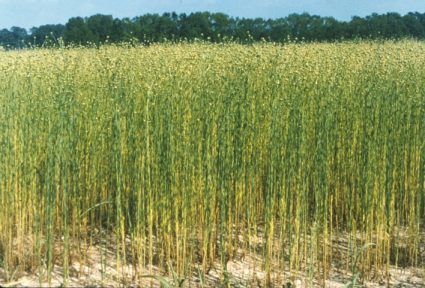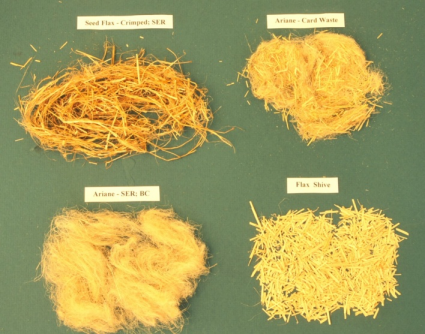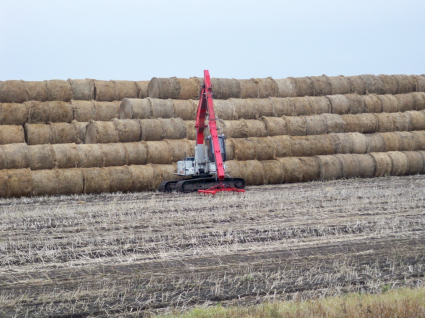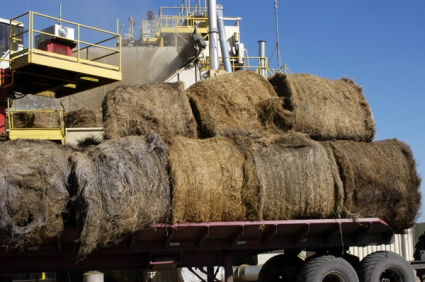
Flax is an important oilseed crop which has numerous commercial properties. Figure 1 is a photograph of flax in the field. The seed itself is highly regarded as a source of Omega 3 oils. The oil from the pressed seed is the finest drying oil and a component in high end paints and coatings. The fiber has been harvested for centuries and spun and woven into the finest fabrics known as linen. This application is the measurement of the fiber and shive content (flax is a bast fiber plant with long cellulosic fibers that are very pure) of a large 220 kg (470 pound) finished bale. From the processors perspective anything that is not fiber is shive as can be seen in Figure 2.

The models were developed in the laboratory on a dispersive instrument at 10 nm bandpass for %fiber and %shive. The models developed had SECv’s of 0.413% and an R2 of 0.99. These excellent models were developed by gravimetric assay of pure ground fiber and shive had to be modified, that is, transferred to measure as is straw samples. This was done but increased the SECv to 1.5% which is still excellent for the process. The models were then transferred to the LLSi Respect4π instrument for the on line assay of the bales. Models for additional properties were developed for cell walls, lignin and moisture.

The instrument was installed in a flax processing plant in Manitoba, Canada. Raw straw in 680 kg (1500 pound) round bales are brought to the mill and loaded into a large tub grinder as depicted in Figures 3 and 4. The straw is processed by repeated grinding and sieving and finally packed into a finished 220 kg bale. The bales are presented to the LLSi Respect4π spectrometer which traverses over the bale in about 20 seconds, as shown in the video in Figure 5. The bale is filled by flakes from left to right in the baler so scanning the top of the finished bale yields an appropriate sample. This is necessary as at least two round bales contribute fiber to a finished bale. Analyses were completed online and the results were stored on a per bale basis.

The final SEPc for the measurements on‐line with raw finished bales was fiber 5.05, shive 5.01, cell walls 1.01, lignin 1.71 and moisture 0.25. These measurements are based on an analysis of over 36,000 220 kg bales over a seven month period from January through July when the ambient temperature ranged from -48°C to +35°C. There were no instrument malfunctions during the assay period.
While the spectrometer was installed in the mill the models developed on the FT-NIR spectrometer were transferred to two dispersive laboratory instruments with satisfactory results. These models are being used in two plant breeding locations to help produce improved cultivars of flax for commercial use.